Your Lawn and the Ocean: How little green squares threaten the deep blue sea
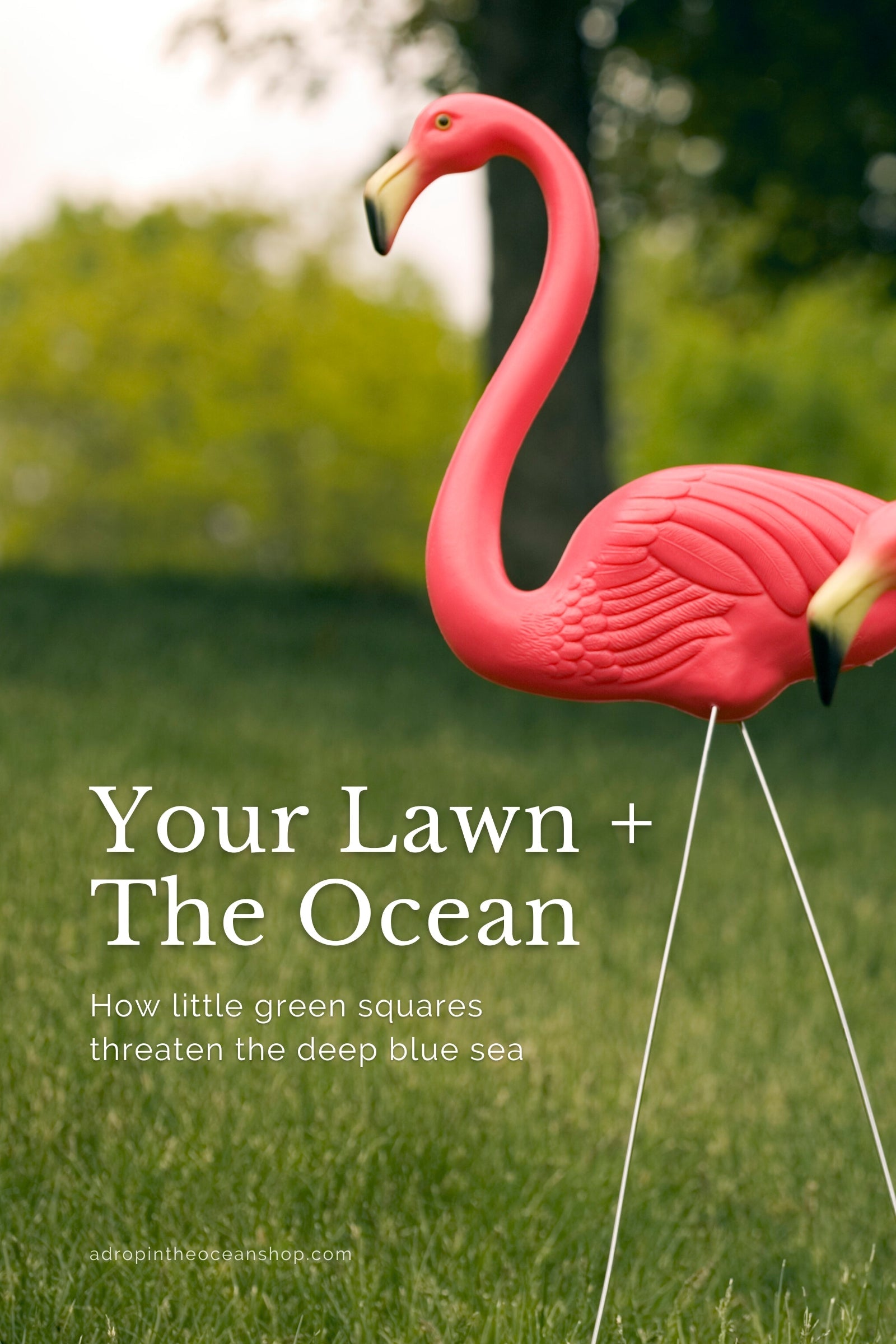
This post first appeared in our weekly Make Waves Mondays email series on August 15, 2022.
Hey friend! I am SO excited for today’s blog.
A couple months ago, one of our EcoWarriors, Robb, was giving a presentation at our local Surfrider meeting about orcas and rain gardens, and how we can use rain gardens as an important tool in protecting our southern resident orcas.
In the midst of his presentation, Robb made a passionate comment about how terrible lawns are for our environment, and I immediately knew I wanted him to write a guest post for a Make Waves Monday on the subject.
Since I don’t have a lawn to maintain, or even think about, this isn’t a topic I’m well-versed in.
But I knew Robb would knock it out of the park.
And holy moly, friend…he did.
This week’s post is so freaking good and I cannot wait for you to read it. Whether you have a lawn or not, you’re gonna get so much value out of this.
So without further ado, I’m stepping aside and handing the mic over to Robb. Thank you, Robb, for sharing your passions with us!
Your Lawn and the Ocean:
How little green squares threaten the deep blue sea
Summer is back in the Pacific Northwest, and the last thing any of us want to do on a hot summer day is mow the lawn. Many Northwesterners just give up on their yards during the summer. We all have a few neighbors who let their grass grow long and turn brown. And can you blame them? Why would someone spend time, money, and energy just to make sure they have a green square in front of their house? The more that you look at lawns, the more you start to question the entire point of having one!
Most lawns in the United States are made up of grasses that originated in Europe. To grow in the U.S., this grass requires more water, especially if you want to keep it green throughout the summer. Because of our national obsession with having a perfect green lawn, grass is now the most irrigated crop in the country, more than any other plant that we grow for food. On top of water, green lawns usually demand fertilizers to stay healthy. Others are resistant to herbicides and pesticides that people use to keep the lawns pristine and weed-free. And about once every week or two, people pull out their gas-powered mowers to spend their free time cutting the grass down a few inches. All of this, just to have neat, little green squares in front of our homes.
While lawns make up just 2% of the land in the United States, they have a huge impact on our environment. Turf grasses have dense and shallow roots, which means they don’t soak up much water when it rains. Instead, that water flows over turf lawns as if it was as impervious as our roads and sidewalks. All the while, the chemicals and toxins sprayed on the lawn are picked up and carried down the storm drain. In Pierce County, all our stormwater goes untreated into our environment. Region-wide, stormwater runoff is the largest source of pollution impacting Puget Sound, carrying almost 75% of all pollution into the ecosystem. With all the rain we get in the Pacific Northwest, even a small lawn creates a lot of polluted runoff.
Fortunately, more and more people are starting to question if constantly maintaining these little green polluting squares is worth it. Where did the American lawn come from, how did it become so ubiquitous in our culture, and can we replace the lawn with something better?

Photo by David Mancini via Unsplash
Where did lawns come from in the first place?
Long before lawns were popular in the United States, most yards were used to grow fruits and vegetables. It wasn’t uncommon to see front yards full of edibles. So when and how did this drastic shift in yard culture happen?
While no one really knows where lawns came from, some think they were almost an accidental creation. Feudal Kings and Lords in medieval Europe ordered forests cleared around their castles so they couldn’t be ambushed by enemies. With the trees gone, grasses took off to create a large meadow surrounding the castle, making it impossible to march an army to the castle unnoticed.
In the 1700’s, the European aristocracy was inspired by these large lawns of the past and associated a big, grassy, tree-less expanse with wealth and status. European manors had neatly manicured lawns with bright green grass. Lawns remained only accessible to the wealthy, who could afford to take land out of food production and had servants to maintain and care for their lawns. For the European elites, a large lawn was a sign of a family’s wealth and power.
These European lawns inspired many of the elite in the United States, including George Washington and Thomas Jefferson. The homes of both of these Founding Fathers have large grassy lawns leading up to their residences. Lawns were still only for the wealthy (both Jefferson and Washington enslaved people who cared for their lawns), but with the endorsement of such prominent leaders, other wealthy Americans began to emulate the lawns of these Founding Fathers, bringing more turf to the United States.
By the mid-1800’s, lawns were a common feature in public spaces and town squares. Things like “bowling greens” and “commons” were public, grassy gathering areas in urban centers. Landscape architects like Frederick Olmstead designed some of the country’s favorite city parks, including New York’s Central Park, and regularly incorporated a lawn in the park’s design. In 1868, Olmstead designed the first U.S. suburb, Riverside, Illinois, so that each home had a small lawn in front of it. Around this same time, the first lawn mowers and sprinklers were being invented, giving families without enslaved people the tools to care for their own lawns. Lawns were suddenly accessible to the upper-middle class, and from the late 1800’s until WWI, lawns grew in popularity with the rise of golf. The sport brought vast swaths of turf grass to Country Clubs across the U.S., further emphasizing the connection between lawns and wealth.
As the demand for turf increased, the U.S. Department of Agriculture created several new species of grass that were easier to maintain. Popular magazines began publishing articles on lawn care, likening a good lawn to being a model citizen. With the advent of car and rail travel at the turn of the 20th Century, homeowners were encouraged to keep a green, manicured lawn so travelers could determine the moral character of a neighborhood.
With the onset of WWI, though, America’s lawn fervor was put on hold. To help with the war effort, people ripped out their grass to plant victory gardens in their front yard. These gardens helped people get through food rations as agricultural supply chains were disrupted across Europe. The Government encouraged people to grow their own edible gardens to offset the impact of these rations and keep the cost of food low. Over five million victory gardens were planted during the first World War, and they were encouraged again in WWII. In 1943, Eleanor Roosevelt planted a victory garden in the White House lawn. In total, over 18 million victory gardens were planted throughout the country.
As the food rations faded after the war, victory gardens were no longer encouraged. Instead, returning service members were given Government support from the G.I. Bill (although this support was largely only given to white veterans) to quickly move into the suburbs and buy homes with yards. Olmstead’s early version of the suburbs had taken off once again, and planned suburban communities were being mass-produced across the country, each home with its own patch of turf. Lawn mowers were built with small, gas-powered engines, and their sales hit new records in 1959 at 4.2 million. At this time there was also a huge uptick in articles about lawn care and maintenance in popular magazines and newspapers. By 1960, having a house in the suburbs with a well-manicured, green lawn was an essential element of achieving the American Dream.
 Photo by Jonathan Hanna via Unsplash
Photo by Jonathan Hanna via Unsplash
American Dream to American Nightmare
While grass lawns were increasing in popularity, they weren’t available to everyone in the U.S. Many of the planned suburban communities explicitly barred non-white and Jewish people from purchasing homes in their communities. One of the most infamous examples is Levittown.
In the 1940’s and 50’s, Abraham Levitt and his two sons built four communities named Levittown. These were among the largest suburban housing developments ever built in the U.S. Homes were mass-produced on an assembly line and placed behind tidy grass lawns along tree-less roads. Homes sold for around $8,000, and WWII veterans were given government assistance to make a down payment – this is, if you were white.
Levittown openly discriminated against non-white and Jewish people, barring them from purchasing a home. Many of the people who moved to Levittown did it explicitly to live in an exclusively white community. Abraham Levitt wrote several pamphlets to residents, encouraging uniformity and conformity. He emphasized that women should remain in the household while men go out for work. Pamphlets on lawn care warned that weeds in a neighbor’s yard may be a sign they are a communist or degenerate.
With this suburban growth and cultural pressure, homeowners were looking for more ways to ensure their lawns stayed green and weed-free. A growing chemical industry took full advantage of the demand and developed pesticides, herbicides, and fertilizers, all with toxic chemicals that had severe ecological and human health impacts.
To keep them green year-round, homeowners constantly watered their grass, even in Southwestern communities like Phoenix, Los Angeles, and Las Vegas where water is extremely scarce. In the face of climate change, many of these communities are now rationing water use, and in some cases banning people from watering their lawns. Today, grass is the most irrigated crop in the U.S., and it’s not even something we eat.
Bringing Habitat Home
Crises bring change, and just like the two World Wars forced Americans to rethink their relationship with lawns, the current climate crisis is causing many people to wonder why we’re so obsessed with maintaining these neat little green squares in front of our homes. From xeriscaping (desert-style gardens that don’t require any irrigation) in the Southwest to rain gardens (gardens to capture excess stormwater) in the Northwest, people are ripping up their turf lawns and creating healthy and diverse yards.
By replacing grass, you can create healthier soils, reduce stormwater runoff, provide food for pollinators and habitat for wildlife, grow your own produce, sequester carbon dioxide, create shade, save you costs on water, and become “that really cool house with the beautiful yard.”
The best part is that ditching turf grass is easy and there are a ton of local resources to help you get started:
Sheet mulching
This is probably the easiest way to get started! Grass acts just like any other weed you can think of: it spreads quickly and has a bad habit of showing up where we don’t want. And because of its very dense (but shallow) roots, grass is extremely hard to pull up. Fortunately, all you need is cardboard to smother your grass. For this tactic, called sheet mulching, you’ll want to lay out cardboard boxes over the grass you want to kill, and then cover that with mulch or arborist chips. This will prevent sunlight from getting to the grass, eventually killing it and turning the grass blades into a layer of green compost. Pizza boxes are great for this (especially since you can’t put greasy boxes in the recycling). After you cover the space with mulch, look for any signs of grass reemerging. Just throw a pizza box over that spot and cover it with some more mulch. You can get free mulch through apps like ChipDrop or pick up arbor chips from TAGRO. It’s never the wrong time to start sheet-mulching, just give yourself 6 months for the cardboard to break down.
 Sheet mulching in action!
Sheet mulching in action!
Native and near-native plants
After you’ve finished sheet mulching, you’ll want to add some plants to your yard. Native plants are always a great option because they have adapted to the local environment and will require fewer resources to stay alive. Keep in mind, with climate change, some of those conditions are changing. If you’re in the Pacific Northwest, consider looking a little further south and over the mountains for North California, Oregon, and Eastern Washington analogs to some of our the Western Washington natives. For native and near-native shrubs, ferns, and flowers check out some of these local nurseries who supply native plants.
 Robb’s native plant yard makeover.
Robb’s native plant yard makeover.
Plant a tree, save the world
Trees are one of the best plants ever. They come with so many benefits from soaking up water and carbon to providing shade on lethally hot days. There’s a Chinese proverb that says the best time to plant a tree was 20 years ago, and the second best time is now. There’s no excuse to put off a tree planting with the help of local programs offering free and cheap trees, like the City of Tacoma’s Grit City Tree program and Pierce Conservation District’s Urban Tree Sale.

See if a rain garden is right for you
Stormwater runoff is a huge problem for Puget Sound: it’s the largest source of pollution and it comes from all of our human communities. Rain gardens can help by capturing runoff from our homes and buildings, cleaning it and putting it back into the soil (instead of down the drain to the ocean). Rain gardens require a little assistance, so reach out to Pierce Conservation District to see if a rain garden is right for you.
 A rain garden stores and filters excess rainwater to prevent it from washing into our waterways.
A rain garden stores and filters excess rainwater to prevent it from washing into our waterways.
Learn about edible gardening
Use your yard to grow your own food! Just like the victory gardens of the early 20th century, pandemic gardens popped up over the last few years. A lot of folks (myself included) may have started gardening for the first time (especially given previous generations’ obsession with grass over edibles). You can learn full circle gardening with Harvest Pierce County’s Edible Gardens Workshop (and previous lesson recordings are on the site!).
Find technical support and grants to help you
While removing turf grass isn’t rocket science, it can require a little help. And depending on how much grass you’re removing, a little financial assistance wouldn’t hurt. Fortunately, there are grants available for folks locally and technical support from Pierce Conservation District. You can learn more about these resources here.
Regardless of if you’re taking out a small section of grass or eliminating your entire lawn, by replacing turf with native plants, you’re having a positive impact. The most important part is to get started!
Sources + Additional Reading:
How the Perfect Lawn Became a Symbol of the American Dream - HISTORY
Lawn - History of Early American Landscape Design
The American Lawn: A Eulogy - The Atlantic
The American Obsession with Lawns - Scientific American Blog Network
The Controversial History of Levittown, America's First Suburb - Untapped New York
The Great American Lawn: How the Dream Was Manufactured - The New York Times
The History of the American Lawn
Related:
What is Manufactured Demand?
What is "reef-safe" sunscreen, and why does it matter?
Why You Shouldn't Rake Your Leaves This Fall
Get to know Robb!
As the Green Stormwater Program Manager for Pierce Conservation District, Robb works with homeowners, community groups, and businesses in the most urban watersheds in Pierce County to prevent polluted stormwater runoff from reaching our creeks, rivers, and the Salish Sea. Robb is passionate about transforming our cities and urban communities by replacing concrete and lawns with rain gardens and native plants. Before joining PCD in 2021, Robb worked across the west with environmental nonprofits, including Defenders of Wildlife, National Parks Conservation Association, and Environment Washington. When he’s not spending time in a garden, Robb is either out on the trails with his dog Zorro or exploring the excellent microbreweries in the South Sound.
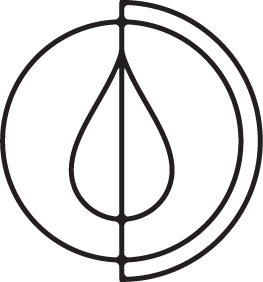

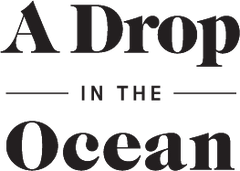



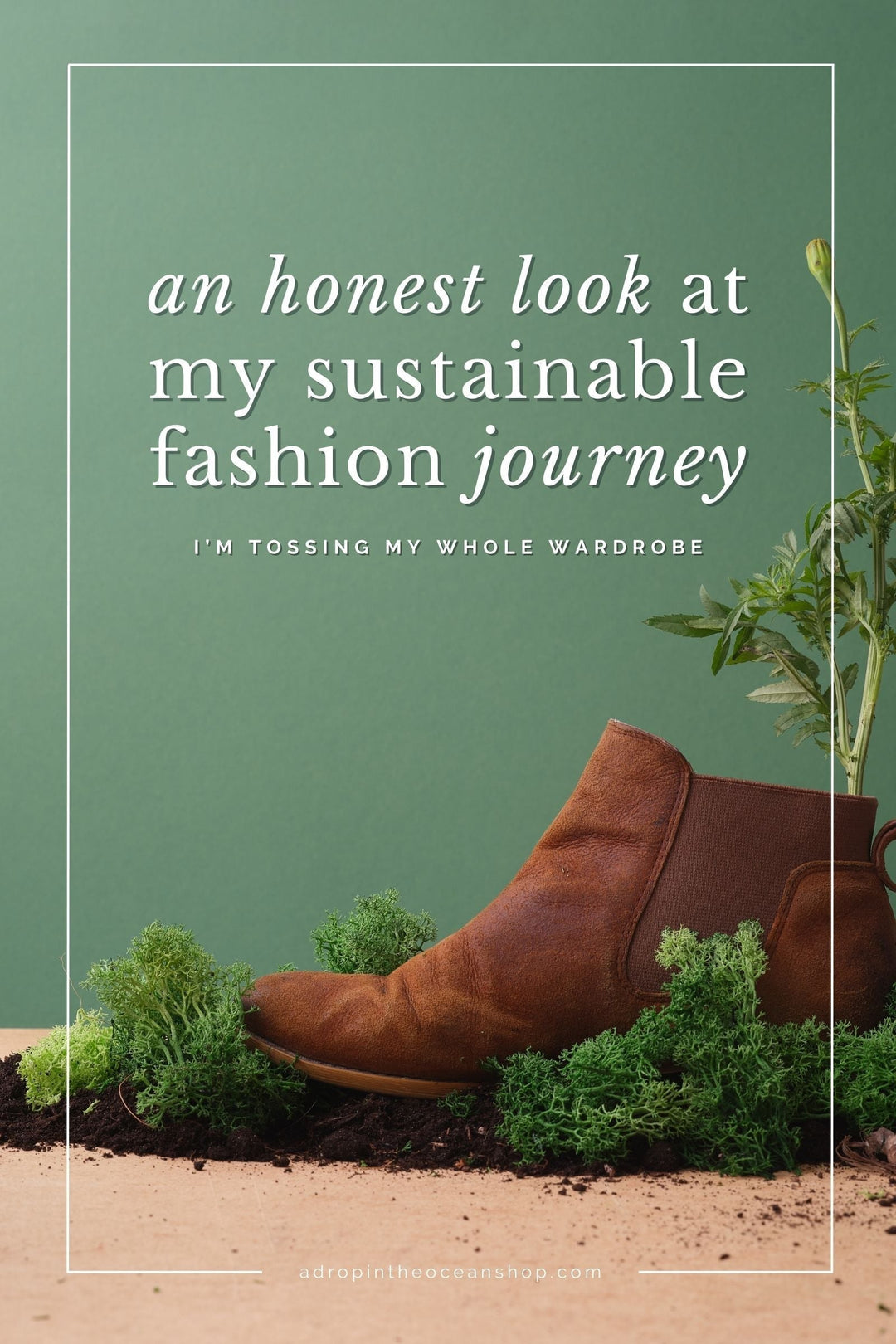
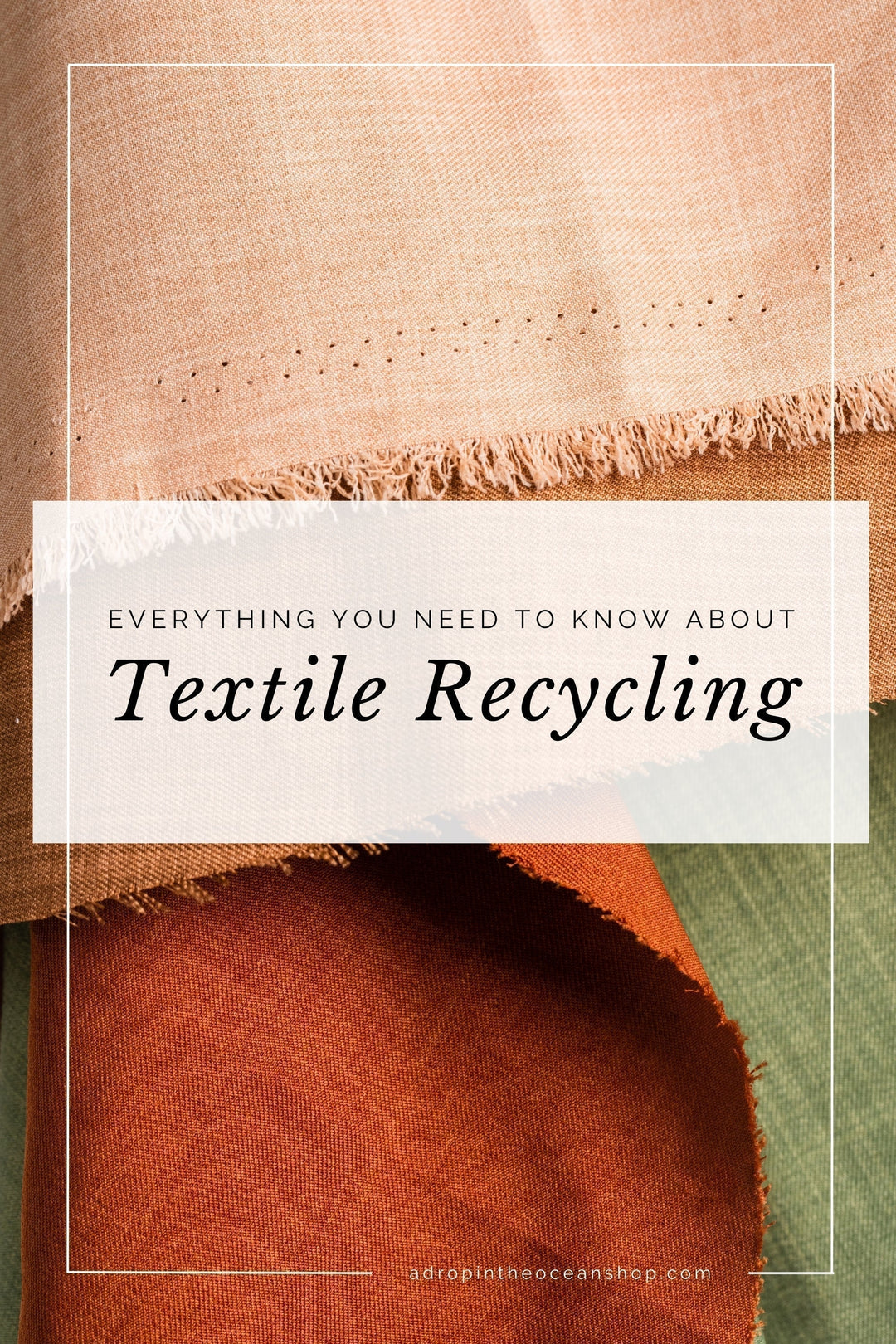
Leave a comment